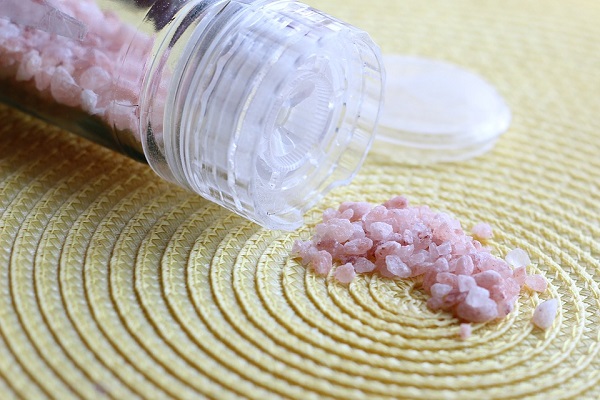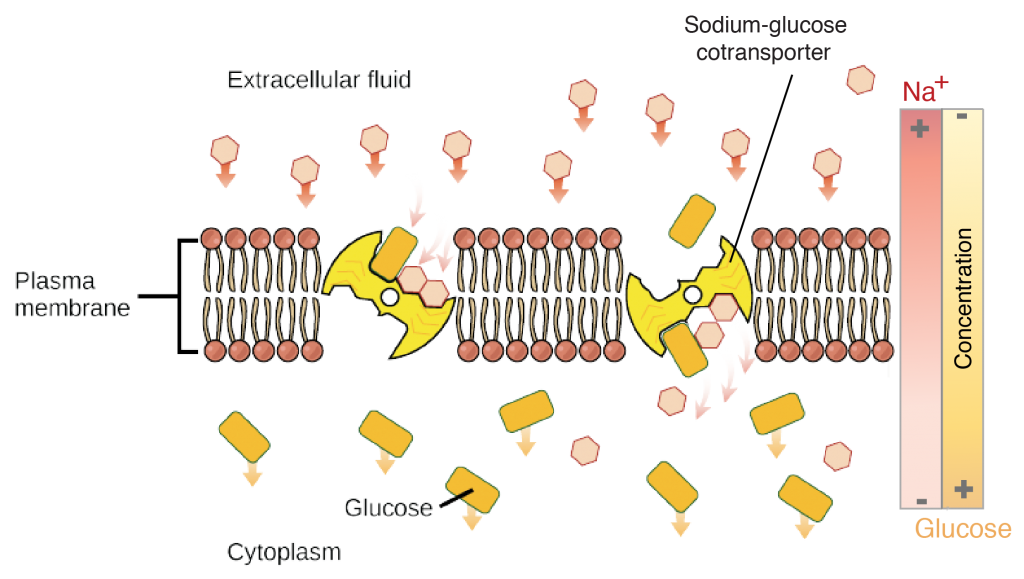In this blog post, we answer salt-related questions often asked by dysautonomia patients. Read to learn about the kidneys, the sodium-glucose pump and potassium intake.
Many dysautonomia patients and their caretakers can remember the day of their diagnosis. Beyond the emotional impact of learning about the presence of a chronic disease, the term “dysautonomia” usually breeds curiosity because it is not well-known within the medical community.
Understanding some of the science behind dysautonomia and the treatments commonly recommended can help. One of the most important treatments recommended by doctors to most (but not all) dysautonomia patients is to increase salt intake. Salt intake is can be more efficient when the salt is combined with a bit of sugar in the form of glucose, because of the sodium-glucose pump.
How does the sodium-glucose pump work?
Put simply, the sodium-glucose pump describes the way cells use salt ions to absorb glucose. The process is powered in three ways:
- Electrical charges: Sodium is a positively-charged ion. Therefore, as the concentration of sodium builds up, an electric charge is created. As anyone who has played with magnets knows, electric charges can power movement, even at the microscopic cellular level.
- Concentration gradient: As we recently discussed in our blog post “Why is there salt in sweat?” if two solutions are separated by a semipermeable membrane, the concentration of ions dissolved in those solutions tends to equalize over time. In layman’s terms, this means that if the concentration of sodium inside a cell is different from the concentration of sodium outside the cell, eventually the two concentrations will equalize on their own.
- ATP: ATP (which stands for adenosine triphosphate) fuels the processes that take place inside the cells. Glucose is crucial to the production of ATP, which is why you have always heard that “the body runs on glucose.”
A combination of the above processes powers the sodium-glucose pump. Below, we have outlined the steps that take place. It is important to recognize that this process is cyclical, and Step 4 leads back into Step 1.
Step 1: A typical cell contains a lower concentration of sodium ions internally, compared with its environment. This is because the cell constantly releases sodium ions back into the surrounding plasma through the use of ATP as described in Step 4. (Remember, this process is cyclical.)
Step 2: The lower concentration of sodium ions inside the cell creates an imbalance in two ways. First, a negative electrical charge builds up inside the cell, which attracts the positively-charged sodium ions from the surrounding plasma to cross the cell wall and balance out the charges. Second, due to the concentration gradient, sodium ions will naturally drift inside the cell wall anyway, until the concentration of sodium ions inside the cell is the same as the concentration of sodium ions outside the cell.
Step 3: As sodium ions cross over the cell wall into the cell, they pull glucose molecules with them. Admittedly, this description oversimplifies the process a bit, but essentially, a cell wall is full of tiny openings, which are called sodium-pumps. The pumps constantly open and close to force sodium outside of the cell (Step 4). When they open externally, a glucose molecule is able to slip inside, and when the pump opens internally, that glucose molecule then enters the cell to be broken down into ATP.
This helpful diagram from the Khan Academy helps us visualize the process:
_Image modified from “Active transport: Figure 4,” by OpenStax College, Biology (CC BY 3.0) and “Scheme secondary transport,” by Mariana Ruiz Villareal (public domain)._
Step 4: So far, the process has been powered by electrical charges and concentration gradients, meaning the cell has been able to rely on natural forces and avoid expending any energy. But to keep the process going, the cell must fight these forces and restore an imbalance of sodium ions, in order for the electrical charge to rebuild. To do this, the cell uses ATP to power the sodium pump and force sodium ions back into the surrounding plasma. This then leads to Step 1, and the process repeats itself continuously.
This process is one of the reasons why low sodium levels result in fatigue, weakness and brain-fog. Without sodium to power the sodium-glucose pump, the body cannot absorb the glucose it needs to fuel itself. On the other hand, glucose can facilitate sodium absorption, but is not required for sodium absorption, as sodium transport through cell walls can occur via other methods (sodium pump).
Why are POTS patients advised to consume excess sodium?
One of the first things dysautonomia patients learn — particularly those patients with postural orthostatic tachycardia syndrome or POTS — is the need for most patients to dramatically increase salt intake. While this may go against the common advice that sodium should be avoided to prevent high blood pressure, POTS patients are often advised to consume five to 10 grams of sodium per day.
There are myriad reasons for why POTS patients need to increase sodium consumption, and each individual is different.
With that said, some POTS patients have abnormal levels of the hormones that regulate blood volume, such as angiotensin and aldosterone, although the reason for this is not currently known. These hormones help the body regulate sodium levels, which is important for managing blood pressure and maintaining proper blood volume. In fact, one of the main reasons POTS patients are advised to consume excess sodium is to increase blood volume, which helps reduce orthostatic symptoms. POTS patients are sometimes prescribed the medication fludrocortisone, which helps the kidneys retain more sodium in the body, although salt supplements can also provide this benefit.
Why is it necessary to increase potassium intake along with sodium intake?
The body manages its electrolyte levels through a balance of ratios, and one important ratio is between sodium and potassium. Increasing sodium and water intake will help your symptoms, but sufficient potassium intake is also necessary. At all times, the body wants to maintain an appropriate balance of sodium and potassium; therefore, if potassium levels are too low, the body will not continue to absorb sodium through the digestive system. Thus, consuming additional sodium is useless.
Potassium is abundant in plant-based foods, and you can obtain enough potassium through a diet based on a diverse selection of fruits and vegetables. While some POTS patients also consume potassium supplements, it is vital that you consult with your physician first.
Each SaltStick Vitassium capsule contains 250 mg of sodium and 50 mg of potassium, in order to balance intake. If you have any specific individualized concerns on electrolyte balance, please consult with your physician.
Disclaimer: Contact your physician before starting any exercise program or if you are taking any medication. Individuals with high blood pressure or on certain medications should also consult their physician prior to taking an electrolyte supplement. Overdose of electrolytes is possible, with symptoms such as vomiting and feeling ill, and care should be taken not to overdose on any electrolyte supplement.

